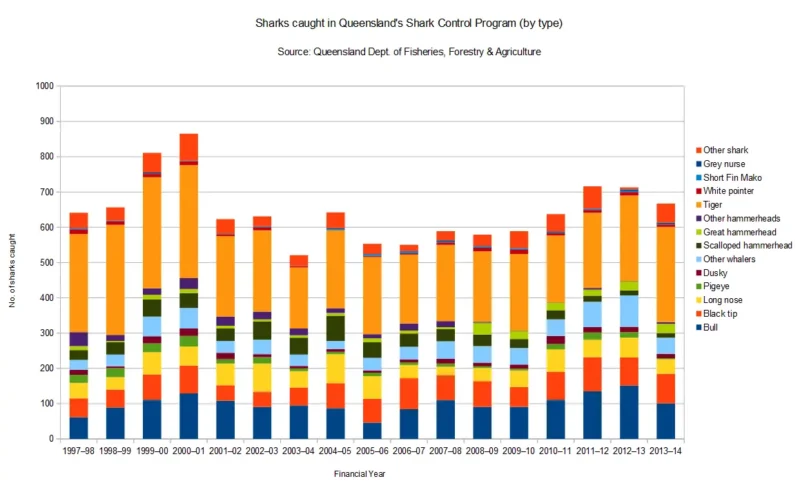Shark nets are about 150 meters long and lie several hundred meters off the coast in the water. Unlike many beach visitors believe, they do not form a barrier. Sharks can easily swim under or over the nets. Around 40 percent of the captured animals even become entangled on the shoreward inner side, which means they had already reached the bathing zone. In addition, the nets do not only kill sharks but also dolphins, sea turtles and other marine animals – completely indiscriminately.
Alternatives to killing sharks
For several years, Australia has relied on modern, non-lethal methods such as drone surveillance, SMART drumlines (where sharks are caught, tagged and released), real-time alert systems and public education. States like South Australia and Western Australia have already abolished shark nets and rely exclusively on these approaches.
In Queensland, however, the use of nets and drumlines has even been expanded recently – an approach criticized by experts as a politically motivated “tough stance” against sharks.

Changing social attitude
Studies show that while the public’s fear of sharks remains consistently high, support for lethal measures is declining. Many people were previously unaware that nets are intended to kill sharks rather than keep them away. More recent research also shows that there is no difference in shark encounters between beaches with or without nets.
Rare incidents – greater dangers elsewhere
Between 2015 and 2025, Australia recorded an average of about 20 injuries and just under three deaths per year from shark attacks. In the same period, last year alone 150 people died while swimming from drowning, 84 of them at beaches. Statistically, the danger from sharks is therefore very small compared to other risks at the sea.
A first step with symbolic impact
The selection of beaches for the trial run lies with the local communities, which are to submit their proposals to the government by the end of August. Experts see the initiative as an important turning point: it creates an opportunity to demonstrate to the public the benefits of modern protection methods while at the same time strengthening the protection of endangered marine animals.




